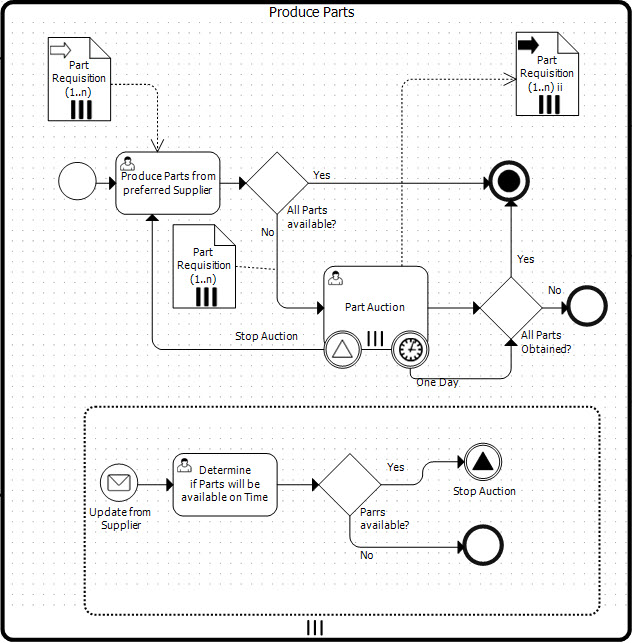BPMN (Business Process Modeling Notation) is a modeling notation specification. Its primary goal is to provide a notation that is understandable by all business users. Thus, the core set of BPMN modeling elements enables easy development of simple Business Process Diagrams (BPD) which are made up of a set of graphical elements that are familiar to most business users.
BPMN defines the visual appearance of BPMN elements so that the appearance of shapes and icons is fixed. However, sizes, colors, line styles, and text positions can be modified. Furthermore, new icons and indicators can be added to model elements but the basic shapes cannot be changed. New artifacts can also be added to diagrams for as long as the shape does not conflict with any existing shape or icon.
QPR Modeling Client 2017.1 follows the BPMN 2.0 standard's Process Modeling Conformance. This includes the core set of BPMN elements, business process diagrams, and collaboration diagrams. For the purposes of creating a BPMN model, there is a built in BPMN 2.0 modeling template that can be selected as an option to the default template. Note that also the older BPMN versions 1.0 and 1.2 templates are included in QPR Modeling Client installation. The BPMN 2.0 template includes all the BPMN 2.0 Process Modeling Conformance-specific graphical objects, as well as a set of attributes defined for the objects. In addition, a template containing the choreography and conversation diagrams is available with a separate license.
The graphical objects of BPMN have been mapped to the Business Process Execution Language for Web Services (BPEL4WS v1.1), which is the standard for process execution. This means that BPMN models can be exported to BPEL4WS and the process/workflow can be executed in the process automation tools or workflow engines. However, the currently supplied BPMN 2.0 template does not support the Process Execution Conformance, so exporting a BPMN model created with the BPMN 2.0 template to BPEL is not supported.
The flow of elements in BPMN defines the order of activities performed in the process. The process flow begins with a start event and ends to an end event. The flow can have parallel or alternative paths defined by gateways.

Example BPMN process flow created with QPR Modeling Client
For further information on BPMN and for the full specification, see www.bpmn.org and http://www.omg.org/spec/BPMN/2.0/PDF.